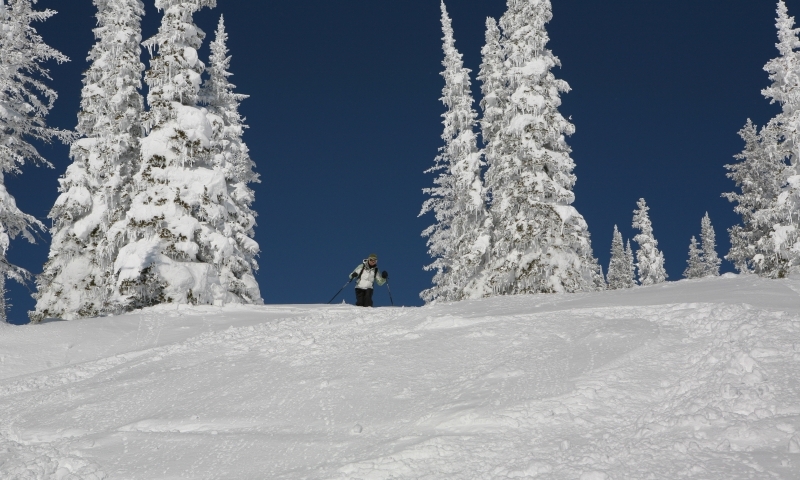Forest Service employee, Pete Wingle, was in charge of recreation and lands for the state of Colorado. If a ski area wanted to expand, Pete was the man. Wingle, who was a freelance photographer on the side, took photos of the snow-covered spruce and aspen in Priest Creek against the bright blue Steamboat sky. His photographer’s eye grasped the vision of Randolph and Werner, and he pronounced: "If you don’t put a lift here, and don’t use this area, you’re nuts."
Before the snow melted that season, trees were tagged to be cleared for the Priest Creek and Elkhead lifts. But more importantly, the decision not to cut trees, and leave the area in as much of its natural state as possible, was mutually agreed by all.
Steamboat as the ski area built by locals for locals entered a new era of expansion, and gained a reputation that would grow as wide as the trees grow tall.
Word of Steamboat’s tree skiing began to spread and attracted skiers from around the country, not all of whom were experienced skiers in the trees. With the esteem of runs like Shadows and Twilight, the resort continued to develop other tree skiing areas throughout the resort on even more gentle pitches, with more spacing and "ways out" so novice tree skiers could develop their confidence.
"I like the discipline of riding the trees because it forces you to react," explains Sherman Poppen, the inventor of the "Snurfer" and local Steamboat snowboarder. "There are plenty of good pitches with room in the trees to react. Even when you get older, you still have time to think about where to turn."









